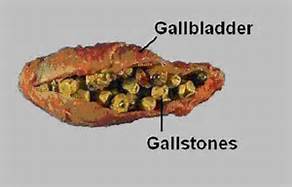Gallstones

|
Dr. Thomas Fuller |
The gallbladder is commonly subject to many disorders, particularly the formation of solid deposits called gallstones. Gallstones, which were once thought to be powerful magical charms, can form into multiple shapes and sizes, from the size of a grain of sand to that of a walnut. Some people can have one or two of them, while others can have dozens, if not hundreds. Some even save their stones from their operations. Because not all gallstones create problems, their exact prevalence is unknown, but it is thought that at least 10 percent of the US population has gallstones. Though only a fraction of this group may eventually develop symptoms, gallbladder problems are on the rise because of our poor diet, drugs, and toxins in the environment. Stones are often found during autopsy in many people who have lived a full life with them and probably never knew it. Known as “silent” stones, they are frequently revealed on CAT scans, MRI’s or ultrasounds while these tests are being done for some other reason.
- What bile consists of
- What kind of gallstones people have
- What processes promote the formation of gallstones
- Why flow of bile gets slow and congested
- Why hepatic ducts clog up
- How gallstones affect your health
- What are early symptoms of gallstones











